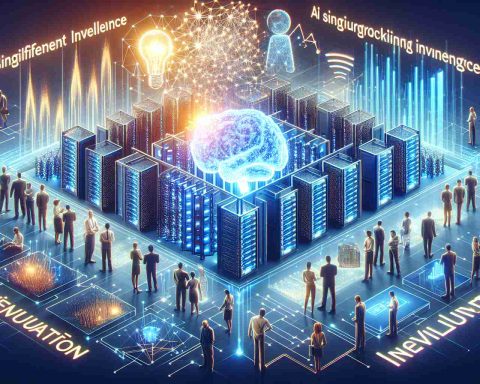OpenAI has unveiled a groundbreaking artificial intelligence model aimed at enhancing performance in challenging fields such as science, programming, and mathematics. Known as the OpenAI o1 series, this new model represents a significant leap forward, launched recently as a preliminary version with plans for ongoing updates. It will gradually be accessible to the broader ChatGPT user base.
The creators behind this technology highlight that the model is designed to engage in more thoughtful problem-solving, akin to human reasoning. During its training, the AI learns to refine its thought process, explore various strategies, and identify mistakes, thereby improving its overall problem-solving capabilities. Notably, researchers in the healthcare sector can utilize this model for detailed cell sequence analysis, while physicists can employ it to derive complex mathematical equations essential for quantum optics.
According to a researcher at OpenAI, the o1 model currently processes information for a few seconds, but future iterations aim for extended thinking periods, which may come at a higher computational cost. This ambitious approach prompts discussions about the energy demands of advanced AI systems, particularly in light of the impending meeting between White House officials and prominent tech leaders, including OpenAI’s CEO. The potential of this AI to contribute to solutions for significant challenges like cancer and climate change is evident, yet it raises critical questions regarding its sustainability and environmental impact.
OpenAI Launches Next-Gen AI Model for Dynamic Complex Problem Solving
OpenAI has recently introduced a state-of-the-art AI model, dubbed the o1 series, that aims to tackle intricate problem-solving across various fields, from scientific research to advanced programming and complex mathematics. This latest innovation is seen as a pivotal development in AI technology, designed not just for high performance but also for greater engagement in thought processes similar to human reasoning.
Key Features of the OpenAI o1 Series
The o1 model is notable for its advanced capabilities in adaptive learning and error recognition. Through rigorous training, it develops a refined thought process, enabling it to evaluate diverse strategies when responding to challenges. This adaptability makes it particularly valuable in sectors like healthcare and environmental science, where AI can assist in cell sequence analysis and model climate change scenarios, respectively.
Crucial Questions About the o1 Model
1. How does the o1 model integrate ethical considerations in its learning algorithms?
– OpenAI emphasizes the incorporation of ethical frameworks during training. The model is programmed to recognize and mitigate biases, with ongoing assessments to ensure compliance with ethical standards as it evolves.
2. What implications does this model have for job markets and automation?
– While the o1 model enhances efficiency and productivity, there are concerns about its impact on employment. OpenAI advocates for complementary human roles, emphasizing that AI should augment rather than replace human capabilities.
3. What are the limitations of the current o1 model?
– Despite its advanced capabilities, the model’s performance is still limited by processing time and computational costs. Future iterations are expected to address these challenges, but this will require significant advancements in hardware and energy efficiency.
Challenges and Controversies
OpenAI’s o1 model is not without its controversies. The foremost issues revolve around energy consumption and environmental sustainability. As the model’s complexity increases, so too do the energy demands, raising concerns about the carbon footprint associated with advanced AI operations. Furthermore, discussions surrounding data privacy and ethical use of AI technology remain a heated topic among stakeholders.
Advantages of the o1 Model
– Improved Problem Solving: The model’s ability to engage in higher-order thinking allows it to solve problems more comprehensively than previous models.
– Cross-Disciplinary Applications: It can be applied to multiple fields, such as healthcare, environmental science, and even arts, demonstrating its versatility.
– Adaptive Learning Capabilities: The o1 model can adjust its learning based on feedback, providing a more tailored problem-solving approach over time.
Disadvantages of the o1 Model
– High Resource Consumption: There is significant computational power required for its operation, leading to concerns about long-term sustainability.
– Ethical and Social Implications: Automation risks and potential biases inherent in AI could lead to detrimental social impacts if not properly managed.
– Accessibility Challenges: The complexity and resource requirements may hinder access for smaller institutions and individuals who could benefit from such advanced technology.
As OpenAI rolls out this innovative technology, the implications for society, the economy, and global problem-solving are profound. Engaging in an ongoing dialogue about ethical deployment and sustainability will be crucial as this technology matures.
For more information about OpenAI and their endeavors in artificial intelligence, visit OpenAI.

















